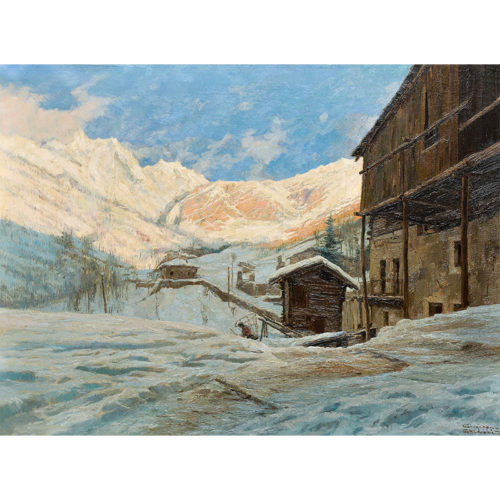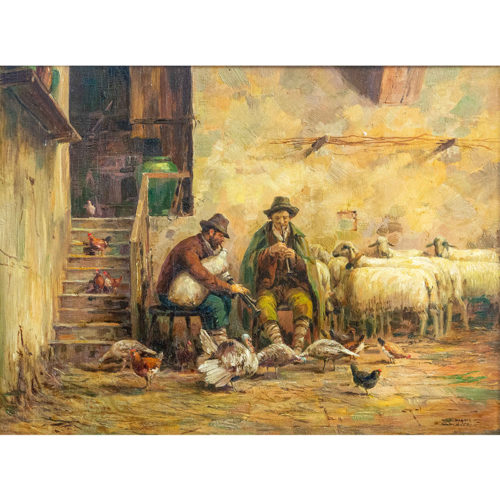"Valle d'Aosta landscape with huts" - Oil on panel by Giuseppe Gheduzzi (1889-1957). Born in Crespellano (Bologna) on May 12, 1889, he lived in Turin where he died on May 21, 1957. He learned the basics of art from his father Ugo, then attended the Accademia Albertina, a pupil of Andrea Marchisio and Paolo Gaidano, for only three years, because he was forced to help his father in the scenography works. He was a skilled landscape painter. It began in Vignola in 1907 with an alpine landscape. He held several solo exhibitions and took part in many exhibitions. He participated in the events of the Promotrice alle Belle Arti in Turin for twenty consecutive years (awarded with a gold medal) and in the circle of artists in Turin. Solo exhibitions were held at the Bolzani Gallery in Milan; at the Galleria A. Garabello in Biella; at Galleri Fogliato and Lombardi Gallery in Turin.
-
Out of stock
 Period: about 1920 Measurements: In frame H 83 x L 102 x P 7 / Table H 61 x L 80.5 cm
Period: about 1920 Measurements: In frame H 83 x L 102 x P 7 / Table H 61 x L 80.5 cm
